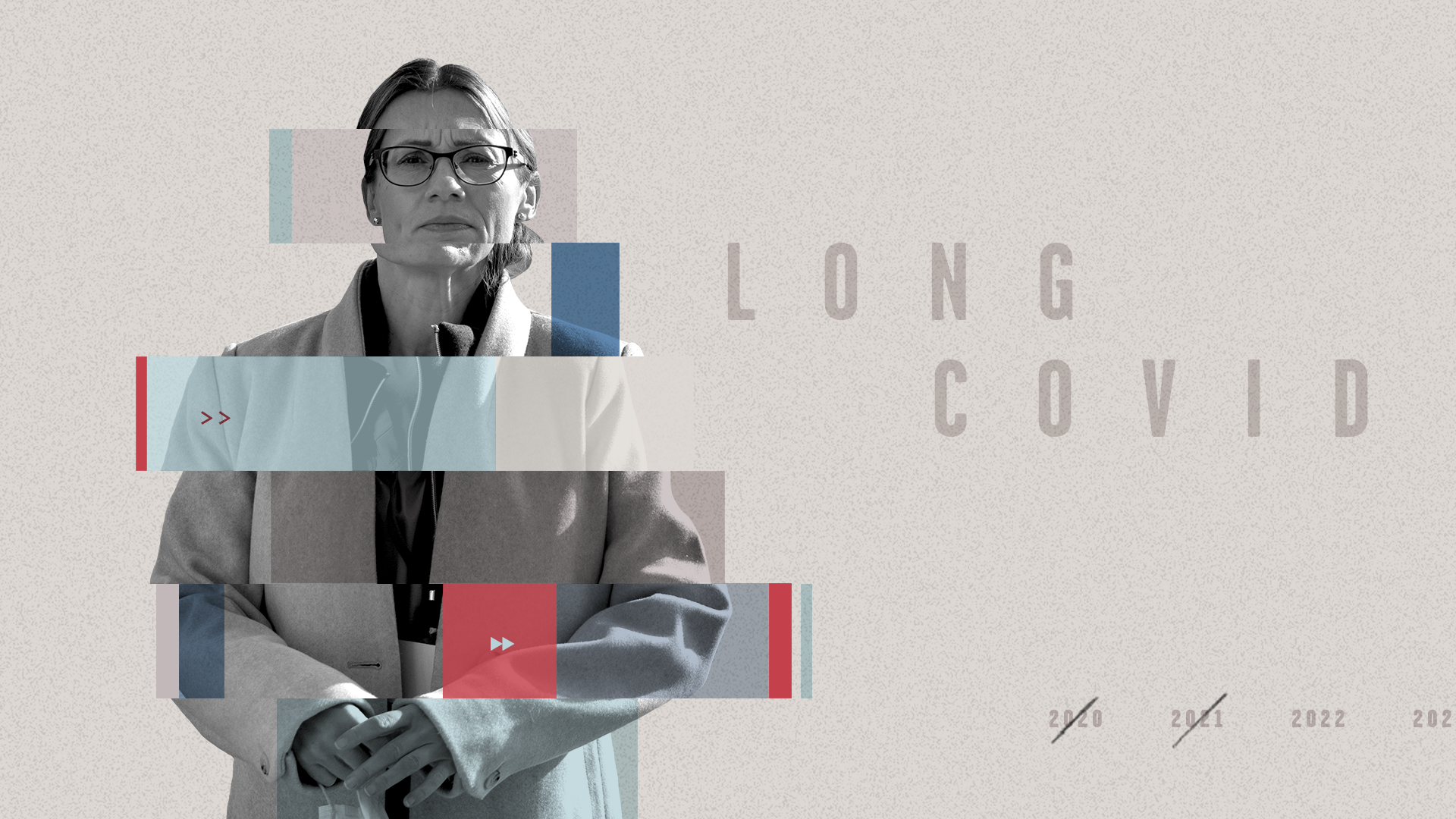Millions of Americans Have Long COVID. Exclusive Data Shows Which Patients Are Hit Hardest

Key Takeaways
Between October and January, about 78,000 privately insured Americans were treated for a post-COVID condition, according to data analysis by FAIR Health provided exclusively to Morning Consult.
About 1 in 10 privately insured long COVID patients are under 23 years old.
Women and girls make up 60% of privately insured long COVID patients.
Until March 2020, Diane Sheehan was always on the move: caring for her two teenage sons, volunteering at local soup kitchens and doing Pilates religiously. Then she was hit with a moderate case of COVID-19 and never got over it. Now, her days are filled with doctors’ visits, hourslong phone calls with her health insurer and a home oxygen concentrator to help her breathe.
The 54-year-old is one of the up to 23 million Americans who have been marked by long COVID, a nebulous illness with a wide range of symptoms that can linger for months, or even years, after someone first gets COVID-19. And new, exclusive data shows that while some patients are affected more than others, the condition is taking a toll across ages and genders.
“I have survived COVID, but I have not recovered from it two years later,” said Sheehan, who lives in North Carolina. “This whole system is beyond broken. I’ve got a 12-inch stack of medical records on top of the notebook for chasing down doctor bills.”
Despite long COVID’s apparent prevalence, official data on who it’s affecting — which could help policymakers target resources and support where they’re needed most — is still two years away.
In the meantime, an analysis from the independent nonprofit FAIR Health, provided exclusively to Morning Consult, indicates that long COVID’s burden is widespread: About 78,000 privately insured Americans were treated for a post-COVID condition between October 2021, when federal health officials created a diagnostic code to identify such patients, and the end of January. Many more are likely being seen without being assigned this code.
Nearly 3 in 10 Long COVID Patients With Private Insurance Are 35 or Younger
Trauma of long COVID impacts young and old Americans
Long COVID “affects the entire support system and family,” said Liza Fisher, 38, whose mother moved to Houston from Ohio to care for her after the condition left her unable to return to work as a flight attendant. And many people aren’t aware of “how severe the lived experience is of people suffering from it, and how traumatic it is.”
That can be true for even relatively young and previously healthy patients. The FAIR Health analysis doesn’t include the millions of people in the United States who are uninsured or have health coverage through Medicaid or Medicare, excluding many older adults and low-income people. But among the privately insured, nearly 35% of long COVID patients are between the ages of 36 and 50, and about 32% are ages 51-64, the claims data shows.
Notably, about 1 in 10 privately insured long COVID patients are under 23 years old. Sheehan’s teenage son is among them. He’s been experiencing severe ongoing symptoms after his second bout with COVID-19, she said, and they’ve faced “gaslighting” from clinicians who shuttle them from specialist to specialist.
“He was in marching band and varsity swim,” Sheehan said of her son. “Now he’s bedridden and getting homebound services, and we’re struggling to find a doctor” because when it comes to young people with long COVID, “adult doctors won’t see them, and pediatricians want to kick them down the line.”
3 in 5 Long COVID Patients With Private Health Coverage Are Women
Data reveals a gender gap in long COVID diagnoses
The analysis also underscores a gender divide, with women and girls making up 60% of privately insured long COVID patients, in line with previous research showing that middle-aged women are more likely to experience severe symptoms after COVID-19. Long COVID researchers and clinicians still don’t fully understand the gender dynamic.
The FAIR Health data doesn’t reflect the racial or ethnic breakdown of long COVID cases, but lawmakers, patient advocates and clinicians are concerned that people of color could be disproportionately affected by the condition.
“You can’t manage what you don’t know,” Rep. Ayanna Pressley (D-Mass.) said on a press call earlier this month. “We need the data.”
The Biden administration has taken note, releasing a governmentwide action plan for long COVID this month that includes efforts to “account for its impact on hard-hit and high-risk populations.”
Diana Berrent, who leads Survivor Corps, a patient advocacy group for COVID-19 survivors with around 200,000 members, said “there are core equity issues at every step.” The group has mobilized to inject “patient-generated, real-world evidence” into research on long COVID, with partnerships across the academic medical community.
Yet without official data, there are still more questions than answers on why certain groups are being hit with long COVID and how to alleviate their suffering. The FAIR Health analysis highlights that doctors and researchers are only beginning to scrape the surface in measuring the toll long COVID is taking on Americans.
“They are really behind the ball on long COVID, because everyone's been so consumed by acute COVID, which is understandable,” Berrent said. “But this shadow pandemic isn't going to go away on its own.”
Gaby Galvin previously worked at Morning Consult as a reporter covering health.